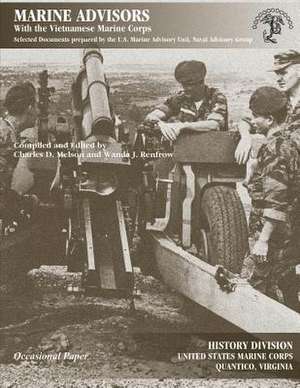Marine Advisors: Quellen Und Forschungen Zur Sprach- Und Kulturgeschichte der
Autor U. S. Marine Corps History Division Contribuţii de Charles D. Melson, Renfrow, Wanda J.en Limba Engleză Paperback – vârsta de la 22 până la 22 ani
Preț: 82.83 lei
Nou
Puncte Express: 124
Preț estimativ în valută:
15.85€ • 16.59$ • 13.11£
15.85€ • 16.59$ • 13.11£
Carte disponibilă
Livrare economică 15-29 martie
Preluare comenzi: 021 569.72.76
Specificații
ISBN-13: 9781494297800
ISBN-10: 1494297809
Pagini: 190
Dimensiuni: 216 x 279 x 10 mm
Greutate: 0.45 kg
Editura: CREATESPACE
Seria Quellen Und Forschungen Zur Sprach- Und Kulturgeschichte der
ISBN-10: 1494297809
Pagini: 190
Dimensiuni: 216 x 279 x 10 mm
Greutate: 0.45 kg
Editura: CREATESPACE
Seria Quellen Und Forschungen Zur Sprach- Und Kulturgeschichte der















